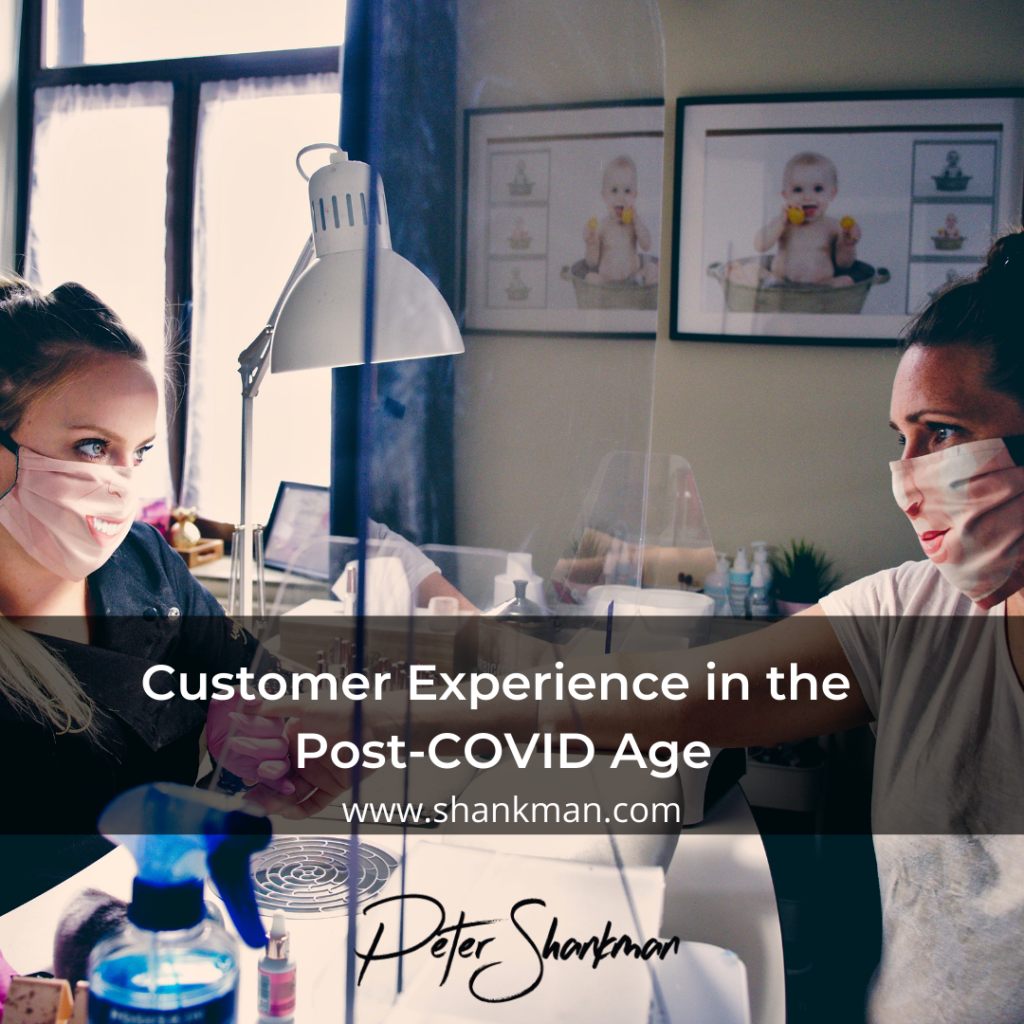In all of my recent virtual keynotes, I’ve been asked the same question. What does customer experience look like in a post-COVID world?
For companies who want to succeed, the answer, surprisingly, isn’t that different from what it looks like now.
You see, the customer experience isn’t about hand sanitizing stations or branded masks, or about showcasing how fast new, clean air circulates on your premises. Those are all things that may or may not play a role in the new customer experience post-covid. What matters to customers, regardless of their economic background or expectation, regardless of whether you’re a corner deli or a 7-star resort, regardless of whether you’re a fast food restaurant or a Michelin rated gastropub, is the same thing that’s always mattered: TRUST.
Let’s face it. There is a level of trust that goes into every single interaction, whether conscious or subliminal. This is true for all times not just the customer experience post-covid. We trust that the restaurant is going to use fresh ingredients that won’t make us sick. We trust that the clothing we buy isn’t going to fall apart after one wash. We trust that the airline will get us to our destination somewhat on time, and in one piece. These are all levels of trust that are implied. When the implied contract is broken, however, the client loses that trust, and goes somewhere else.
Understanding that, one needs to also understand their audience, and build trust around them. There are four basic ways to do that, listed in order of importance below.

The 4 Ways To Understand Your Audience and Build Trust
- Transparency: The one guarantee in life is this: Humans make mistakes. How we handle those mistakes, however, is what separates the companies and brands that will succeed in this new era, vs. the ones that don’t. Own your mistakes. Get in front of them, fix the problem fast, and be open and honest every step of the way. 50 years ago, it was super-easy to lie and get away with it. Today? You’ll be caught. Just own it, fix it, be open about it, and move on.
- Relevance: Ask your audience. Sit down and talk to them and say, ‘Hey, how do you like to get your information?’” If you want to understand what your audience will connect with, just ask them. Not only will this provide you with actionable information, the very act of reaching out to your customers, soliciting their feedback, and implementing it will demonstrate that you value them and their opinions, and you’re willing to change based on their input. With these new brand loyalists in tow, you’ll be able to use their enthusiasm for your brand to win new customers through word of mouth. Remember: No one believes how great you are if you’re the one who has to tell them.
- Brevity: Attention span just isn’t what it used to be, and brands, not consumers, are the ones that need to adapt. It used to be a three minute attention span. Now, brands have roughly 2.7 seconds to get their message across. Become a better communicator. Good communication is brevity. Content creators are no strangers to the idea that you need to hook your audience quickly, but being brief while still communicating your point can be easier said than done, and the more content you create, the easier it becomes to do that.
- Stay Connected: Finally, being at the top of customers’ minds is an extremely influential component of the decision-making process. How can you reach out to your audience on a regular basis, what can you say to them to get them involved, how can you help them? And don’t dismiss the idea of help so quickly. Consistently providing helpful information to your customers (as opposed to constantly selling at them,) can elevate you to trusted confidant status, boosting that “in-person relationship.” Rather than self promoting, determining how you can help them, how can you make yourself an asset to the customer, is the most organic way to stay top of mind, hands down.
The post COVID economy will be full of claims of “sanitized this” and “few touchpoints that,” but in the end, knowing your audience, and giving them what they want, how they want it, in as brief a way as possible, all while focusing more on the help and less on the sell, will guarantee that the messages you want them to hear will not only be heard, but understood, and acted upon as well. And that is what every business needs, whether after a pandemic, or just on a random Tuesday afternoon.
About Peter Shankman
Peter Shankman is a worldwide influencer and spokesperson for brands across the globe. He is a 5x best selling author, entrepreneur and corporate virtual keynote speaker focusing on customer service and the new and emerging customer and neuroatypical economy. He is available now for virtual keynote speaking opportunities. Peter’s virtual keynote talks are engaging, inspiring, and full of real-world ideas and practices that companies can immediately implement to build their business and increase their revenue. Take a look at his speaking reel, and then reach out to find out how he can skyrocket your next event.

